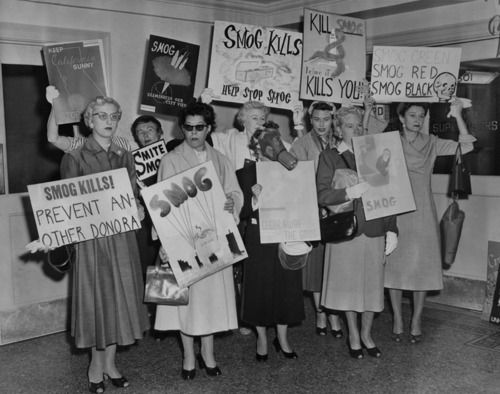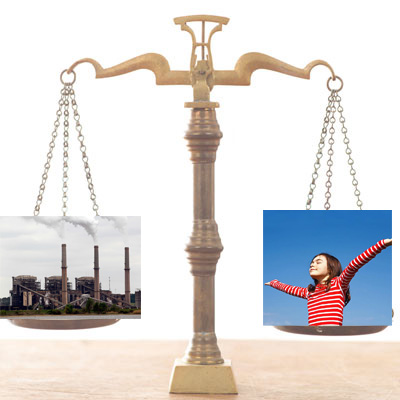Coal
LafargeHolcim is a “Conscientious Corporate Citizen” Everywhere But Texas

In Europe, LafargeHolcim is a multinational cement manufacturer based in Switzerland and France – two countries on the cutting edge of climate crisis planning and members of the progressive European Union. The Company portrays itself as a climate-conscientious corporate citizen, to the point of its Swiss CEO declaring the reduction of CO2 emissions as his first, most important priority.
In Midlothian Texas, LafargeHolcim runs the most conventionally dirty cement plant in Texas and is seeking a permit that could make it one of the most climate-hostile one as well. In fact, there’s some reason to believe the Holcim plant in North Texas is preparing to burn by-products from either the Canadian Tar Sands, the Permian Oil Field, or both, as fuel.
Baking rock to make cement takes a lot of heat. Regardless of how new or old a cement kiln is, regardless of the pollution controls a kiln has, every cement maker in the world still has to employ the same age-old process of applying a 2000 degree open flame to a mix of limestone and other ingredients. A third or more of the cost of running a cement plant is keeping that open flame consistently hot enough to do the job.
This is the reason cement kilns will always try to find cheap, free, even profitable sources of fuel for that flame. Hazardous and industrial wastes that c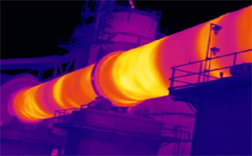 an be diverted from incinerators or landfills can be burned in cement kilns for slightly less money because they don’t have to meet the same standards. Used tires and oil. Lottery tickets. Dashboards from cars. Even municipal waste is now being burned in kilns.
an be diverted from incinerators or landfills can be burned in cement kilns for slightly less money because they don’t have to meet the same standards. Used tires and oil. Lottery tickets. Dashboards from cars. Even municipal waste is now being burned in kilns.
Burning anything causes air pollution. Burning wastes causes lots of conventional and exotic air pollution, including CO2. But just baking limestone rock also releases a lot of stored CO2. Even if there was some was to make cement without a flame, the heat needed would still release tons of CO2.
Worldwide the cement industry is estimated to be responsible for 5 to 7% of the planet’s CO2 emissions – larger then the airline industry. If the industry were a country, it would be the third largest emitter on earth, behind the United States and China.
Companies like LafargeHolcim are facing both public and financial pressures to reduce that number. In July European funds managing $2 trillion in assets called on cement companies to slash their greenhouse gas emissions, warning that a failure to do so could put their business models at risk. The mangers specifically mentioned LafargeHolcim and urged it to adopt the goal of net zero carbon emissions by 2050 and align itself with the Paris Climate Accords.
LaFarge Holcim has responded by initiating a series of technical innovations and pilot projects under the banner of “The Plant of Tomorrow” to prove its forward thinking.
Almost 300 facilities around the globe are targeted for inclusion in one or more of these “Plant of Tomorrow” projects, including a Canadian kiln installing a carbon-capture pilot project, an Ohio kiln building three wind turbines to secure its electrical needs, and kilns burning industrial waste as “low carbon” (if not low toxic) fuel.
Left out of this mix so far is Holcim’s woe-be-gone Midlothian plant. You might call it Holcim’s “Plant of Yesterday.” Despite having lots of stiff competition, Holcim not only operates the dirtiest cement plant out of the three doing business in Midlothian, but it’s the dirtiest in the entire state.
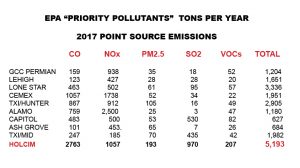
Holcim’s Midlothian plant is the largest Carbon Monoxide (CO) polluter among all 10 Texas cement plants – a sign of poor combustion. It’s the second largest Nitrogen Oxide (NOx) polluter among the bunch, emitting almost twice as much smog pollution as the other two Midlothian cement plants combined. It’s the largest PM 2.5 (Particulate Matter) polluter by far – almost 100 tons a year separate it from second place. It’s the largest Sulfur Dioxide (SO2) polluter by a large margin and releases four times as much Volatile Organic Compounds (VOCs) than the next highest plant. Almost all 2017 pollution numbers for Holcim have gone up over the last five years. A plant that was already bad is getting worse.
Now add Holcim’s request for a new permit to burn 100% Petroleum Coke in one of its two kilns.
Pet Coke is a byproduct of oil refining. It’s a concentrated carbon solid residue that is left behind after the refining process has converted the bulk of the oil into liquid fuels such as gasoline and diesel.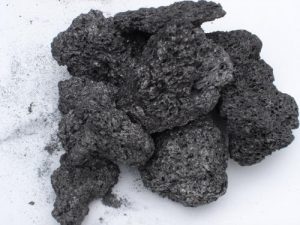
Pet Coke is like coal, but dirtier. Pet Coke looks and acts like coal, but it has even higher carbon emissions than coal. On a per-unit of energy basis Pet Coke emits 5 to 10 percent more carbon dioxide than coal. A ton of Pet Coke yields on average 53.6 percent more co2 than a ton of coal.
As well as significantly higher co2 emissions, Pet Coke also has high sulfur and toxic metals content than coal.
Because its a waste product, Pet Coke is cheap for Holcim to buy or it could even be free if a refinery wanted to get rid of its supply. And now, thanks to the exploitation of the Tar Sands and the oil boom in the Permian the US has lots and lots of Pet Coke. The heavy oil refining capacity in America is now the largest in the world, with over 40 percent of the global market. Much of that production takes place on the Texas Gulf Coast in huge new expanded refinery complexes like Motiva and Total in Port Arthur. The capacity to produce Pet Coke in U.S. refineries has doubled since 1999. In fact, the annual production of Pet Coke is so large these days, it’s outstripped most of the usual uses for it and is “priced to move.”
Because Holcim wants to burn 100% Pet Coke, and it must have a reliable source to burn it 24/7, there’s reason to believe the company has signed a sweetheart deal with one or more refineries to supply it. Probably from the Gulf Coast, and probably from one of the refineries dealing in Canadian Tar Sands oil or Permian Basin product. Both are poster boys for irresponsible fossil fuel development with the Tar Sands and the Keystone Pipeline igniting modern Climate Crisis activism and the Permian becoming one the planet’s largest sources of Methane as tons of unused natural gas are burned off from thousands of rigs.
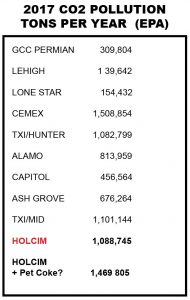 Currently, Holcim is “only” the third largest CO2 polluter among all ten cement plants in Texas, and fourth among all of Holcim’s U.S. plants. But burning 100% Pet Coke in its Kiln #2 could change that rapidly by adding a whopping 400,000 tons more of CO2 to its annual totals. That would send it to #2 in Texas and #2 in the entire US Holcim fleet of cement plants. Not very climate conscientious. And probably not a number you want to tout in trying to sell your “Plant of Tomorrow.”
Currently, Holcim is “only” the third largest CO2 polluter among all ten cement plants in Texas, and fourth among all of Holcim’s U.S. plants. But burning 100% Pet Coke in its Kiln #2 could change that rapidly by adding a whopping 400,000 tons more of CO2 to its annual totals. That would send it to #2 in Texas and #2 in the entire US Holcim fleet of cement plants. Not very climate conscientious. And probably not a number you want to tout in trying to sell your “Plant of Tomorrow.”
At the same time Holcim is trying to project an image of a concerned 21st Century corporate entity to the rest of the world, it’s doing business in Texas like its still 1999.
Officially, the State of Texas doesn’t care about CO2 pollution. Heck, officially it doesn’t even believe there’s a climate crisis. There is no regulatory system for controlling its releases and only the EPA bothers to track CO2 releases at all. So this increase in planet-melting pollution will go completely unaddressed in the permit proceedings themselves.
Also officially, despite the evidence, the State and Holcim both say no other kinds of pollution will increase when 100% Pet Coke is burned at Holcim. No increase in PM 2. 5. No increase in SO2. No increase in metals. Citizens don’t believe them. A group calling itself “Midlothian Breathes” has formed to fight the new permit and has already caught regulators off guard asking tough questions about new emissions.
But trying to get the State of Texas to do the right thing about air pollution is an uphill fight. Instead, perhaps citizens should take these embarrassing numbers directly to LafargeHolcim, who’s claims of new fund corporate responsibility are belied by them. Contrasting its Texas operations with those of the rest of its facilities may be a way to shame the company in its own European backyard. Officially the company may still be able to be embarrassed. Texas state government left that possibility behind years ago.
THE CLEAN AIR FUND THAT TIME FORGOT
Over a decade ago $500,000 was collected from North Texas local governments to protect Texas air.
It’s been sitting in a bank account ever since. Until recently, not too many people even knew it existed.
Now, citizens want to use a part of it to build a world-class 21st-Century air monitoring network for DFW.
__________________________________________
In 2006, then-Dallas Mayor Laura Miller teamed up with Houston Mayor Bill White and organized a coalition of Texas local governments to oppose the “fast-track” permitting of a dozen new coal plants Governor Rick Perry was pushing.
15 North Texas cities, Houston, and McLennan County (Waco) established the “Texas Clean Air Cities Coalition” to fund a legal team and the technical expertise needed to take on not only the big utility companies, but Perry and the State of Texas as well.
But before the battles could begin, a settlement was reached that cancelled all but one of the coal plants. The approximately $500,000 raised by the Coalition to wage clean air war was not needed now. Instead of reimbursing the separate contributors, it was kept in total by the Coalition, possibly because it had already been budgeted to “protect Texas air.”
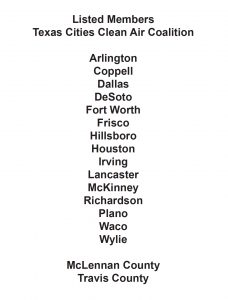
And there it’s sat ever since. With each new election cycle, the number of local elected officials who knew about the fund got smaller and smaller, until there was hardly any institutional memory of the Coalition or its half-million dollar fund left at all.
Downwinders only recently found about the money in the course of discussing funding of the new regional air quality monitoring network we’re working to establish with local policymakers.
While visiting with Dallas Council Member Scott Griggs about Dallas establishing such a network in partnership with Plano and Dallas County, CM Griggs mentioned the Texas Clean Air Cities Coalition and the $500,000 it had accrued, and asked us how our Network idea was different than the TCACC mission. We consider ourselves the premiere clean air watchdog group in DFW but we had no idea the Coalition or its fund was still around.
And, as it turns out, Griggs is the “Principal Officer” of the fund.
Needless to say, we were gobsmacked.
After reviewing some paperwork on the Coalition in Griggs’ office, we answered his question by suggesting that while the original goal of TCACC was to actively oppose those “fast-tracked” coal plant permits, the mission of the monitor network was to gather air quality information for public health purposes.
But on closer examination, we did notice similarities. Many of the municipalities that contributed to the Coalition fund are the same ones that are now interested in participating in the new monitor network, which like the Coalition, is a regional effort. The Mission of the Coalition is “to protect Texas air” primarily, but not exclusively through permit opposition. The spirit, if not the mechanics of the Coalition and Network are originating out of the same concern for public health.
That being said, extracting the money from the fund for modern use could be a convoluted affair. Despite the broad executive 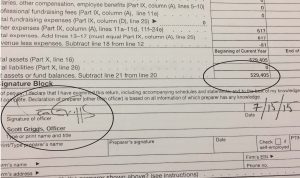 powers given to the Principal Officer in the Coalition’s by-laws, including the authority to commence litigation and intervene in permit proceedings, they don’t address air quality monitoring directly per se. It would appear to take a vote of the remaining Coalition members to ratify a new expenditure for the regional monitoring network, but it’s not clear who they are.
powers given to the Principal Officer in the Coalition’s by-laws, including the authority to commence litigation and intervene in permit proceedings, they don’t address air quality monitoring directly per se. It would appear to take a vote of the remaining Coalition members to ratify a new expenditure for the regional monitoring network, but it’s not clear who they are.
Of the five Coalition officer positions listed in the paperwork Downwinders received from Griggs, three would appear to be vacant, with no one representing Houston, Waco, or Irving due to retirements or elections. Only Griggs and Arlington City Council member Kathryn Wilemon, who both term out in May 2019, remain in elected office.
The discovery of the Coalition fund in 2018 raises all sorts of questions about why it didn’t get used over the last decade of air quality problems. Although there hasn’t been another tsunami of coal plants proposed, there’s still cement plant plants burning industrial waste, still oil and gas facilities still releasing way too much methane, still battles over batch plants in places like West Dallas and Joppa that the money could have gone to…but didn’t. Advocates like Downwinders didn’t even know about it to be able to make the case for its use. It’s a large policy failure on all fronts, that perhaps can be partially redeemed now by spending some of the the collected monies on another regional clean air initiative.
After learning of the Coalition fund, Downwinders asked Dr. David Lary of the University of Texas at Dallas Engineering Department to outline what kind of North Texas air monitoring network could be built with approximately HALF of the fund’s $530,000.
Dr. Lary is the author of the National Science Foundation grant that originally proposed the idea of grid air monitoring in DFW. He’s an expert in the field of high-tech low cost sensors and just got a large US Army contract for testing sensor equipment for the nation’s armed forces.
What he suggested was a 200 + sensor network, operating mostly on solar power and using wifi to bring real time air quality information to the regions seven million residents..for a low, low price of $280,000. This is his itemization:
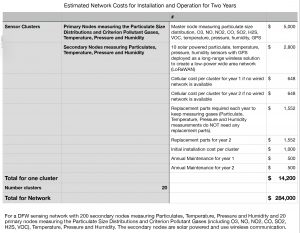
All previous plans had any regional monitoring network growing slowly by charging affordable fees for purchase and installation of sensors. If there’s a large clean air fund that could pay for the immediate build-out, it would propel DFW into the front ranks of “smart cities” and provide public health benefits much sooner.
Now that a City Council Quality of Life Committee hearing has been set for Dallas to decide whether to join the monitor network, the opportunities the fund could provide deserve overdue attention. The question of what role the fund can or should play in paying for a new regional clean air network will be important. Having squandered the ability to provide the kind of assistance it was created for over a decade ago, let’s hope current officials don’t make the same mistake and ignore public health…again.
Meet Our New Campaign Targeting Toxic Particulate Matter: “NO SAFE LEVEL”
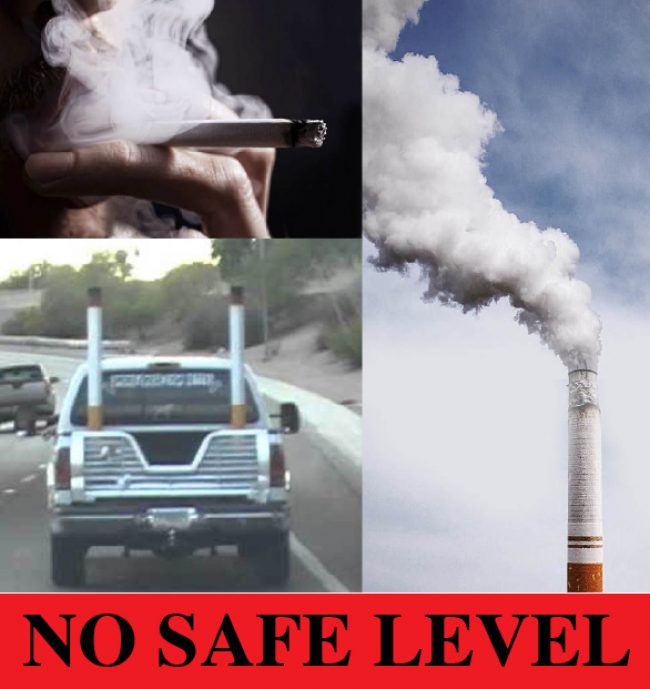
Toxic Particulate Matter – “PM” – is the New Lead
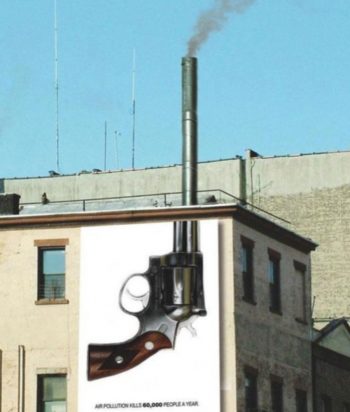
PM is the scientific name for industrial soot. It comes from burning things. Wood. Gasoline. Diesel. Coal. Waste. Everything that depends on on burning something, produces Particulate Matter: cars, trucks, buses, locomotives, boilers, furnaces, kilns, etc.
PM pollution is tiny. It’s much smaller than nature’s dust particles that our nose hairs, throat and lungs have evolved to handle most of the time. Because its so small PM pollution can actually pass through your lungs’ lining and goes directly into your bloodstream. From there it goes to any organ it’s carried to – the liver, the reproductive system, the brain.
Numerous studies have shown the terrible impact of PM pollution on human lungs and hearts.It causes heart attacks, strokes, asthma and COPD. More recent studies have shown a whole new threat. Exposure to PM is now linked to AHAD and Austim in children, and Dementia and Parkinson’s disease in adults. Immune system and reproductive organ damage have also been ties to PM exposure. Like lead in paint and gasoline, this pollution can do damage to a person’s social and intellectual capacities, not just physical ones

PUBLIC INFO & BRAINSTORMING SESSION:
The Dangers of PM Pollution and What We Can Do About It in DFW
Saturday, December 9th
2 – 4 pm
2900 Live Oak in East Dallas
ALL ARE WELCOME
This year the most comprehensive study on PM pollution health effects ever produced was published by Harvard’s School of Public Health. It covered 60 million people over 12 years.
It found significant health damage occurring at levels well below the current EPA standard and concluded there is no “safe” level of exposure to PM pollution. That is, there is no exposure that is not capable of doing some harm to you, no matter how small.
That same study found African-American seniors were three times more likely to die from PM exposure than any other group, with Latinos and Asians also suffering disproportionately. “Point Sources” (smokestacks) of PM are more likely to be in located in low-income communities of color. People of color are more likely to ride diesel-powered buses used for public transit or live along PM-spewing freeways. There’s no other type of pollution that’s linked so closely to how “undesirable” industries and people were forced to live next to one another over the decades.
Here in DFW we’ve flirted with high regional levels of PM pollution but we really don’t know the extent of it since the EPA and State only have four PM monitors for the entire DFW area of seven million people.
That’s why our first job is to help map PM pollution hot spots in DFW. Downwinders is building a “Citizen’s Guide to PM Pollution” that identifies all the largest sources of PM pollution – factories, railways, freeways, transit and school bus routes.
We’re purchasing portable PM pollution monitors citizens can use to police their own neighborhoods and helping to build a new monitoring network that cities can use to track events like the one on Oct 19th – that still remains a mystery.
What can be done in DFW to reduce our exposure to PM pollution? New controls on industry of course, including the cement kilns and coal plants. But also electrification of bus fleets, buffer zones beside freeways, and a detangling of pollution and people in places like West and South Dallas and the Northside of Fort Worth that require pushing the reset button on local planning.
Just turning bus route shelters 180° around so they don’t openly face street traffic has been found to reduce exposure to PM pollution by 30-50% for transit riders – one of the populations at highest risk for PM exposure.
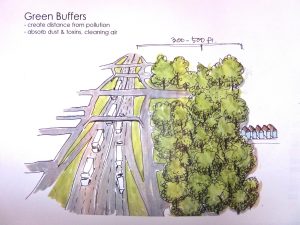
PM pollution is everywhere. It’s so ubiquitous we take it for granted. Much like people took cigarette smoking for granted 40 years ago. And that’s where we’re at with this campaign, at the very beginning of a massive public health education and advocacy effort, a no-smoking campaign for machines that also has the potential to reshape planning, politics, and culture. We have a huge task ahead of us. And we need your help.
Come join us on December 9th to learn more about this insidious from of air pollution and help us come-up with the best approaches for where to start reducing it in DFW.
Saturday, Dec. 9th 2-4 PM Meadows Conference Center 2900 Live Oak
Brown, Big: 1971-2018
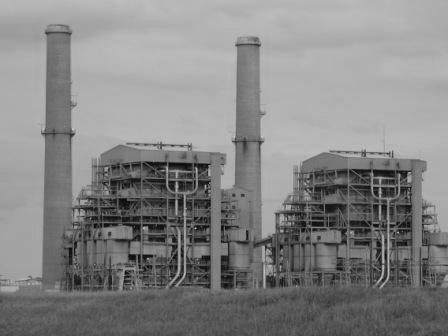 After years of declining fiscal health, the Big Brown lignite coal plant finally succumbed last Friday. An announcement was made by its most recent caretaker, Vistra Energy last Friday morning. The cause of death was obsolescence. It was 47.
After years of declining fiscal health, the Big Brown lignite coal plant finally succumbed last Friday. An announcement was made by its most recent caretaker, Vistra Energy last Friday morning. The cause of death was obsolescence. It was 47.
Controversial from its birth, the 1. 2 Gigawatt Big Brown lived up to its name and was Texas Utilities’ flagship power plant for decades. It began by burning 100% Lignite Coal, the mud-like fossil fuel native to East and Central Texas. By the end however, it was importing thousands of tons of “cleaner” Wyoming Powder Basin Coal in long freight trains to comply with interstate pollution rules.
Along with other coal-fired power plants in East Texas, Big Brown was citied for causing acid rain to by SMU Chemist George Crawford as early as the 1980’s. It was then discovered to be a major contributor t0 Dallas-Fort Worth smog, a fact reinforced by a 2008 study from another SMU professor and former EPA Regional Administrator Dr. Al Armendriz, and more recently by Dallas Medical Society’s Dr. Robert Haley in his 2015 report on ozone levels and public health in DFW. Public Citizen/Texas and the Sierra Club had been particularly hostile to the plant’s continued operation.
As coal lost favor as an energy source, Big Brown’s estimated lifespan had been the subject of countless rumors over the last decade. Towards the end the plant consistently refused modern technology which might have prolonged its life, such as Sulfur Dioxide scrubbers and Selective Catalytic Reduction for smog pollution.
The timing of the plant’s demise was seen as a major embarrassment to officials in the Trump Administration, who’ve promised to promote coal. On the same day as Vistra’s notice about Big Brown’s demise, Trump appointed known fossil fuel promoter Kathleen Hartnett White to lead the White House Council on Environmental Quality.
It was the third Texas coal plant to expire in less than a week. Big Brown was preceded in passing by the Monticello lignite plant, which announced its departure on October 6th. Vistra said its smaller Sandlow power plant near Bastrop was to be closed in 2018 as well.
In 2016, these three coal plants emitted a total of 166 million pounds of sulfur dioxide, 24 million pounds of nitrogen oxide, and 21 million tons of carbon dioxide pollution. Their absence during the 2018 “ozone season” could be the first time DFW stands a chance of complying with the Clean Air Act in 27 years.
Survivors, for now, include the coal-fired Martin Lake and Oak Grove power plants, as well as NRG’s Limestone power plant, southeast of DFW.
Trump is Rolling Back Smog Standards. Get Your Anger On The Record.
What: EPA Rollback of Smog Standards – and Everything Else
Action: Submit Public Comments here ASAP
In accordance with Executive Order 13777, titled “Enforcing the Regulatory Reform Agenda,” establishing a federal policy “to alleviate unnecessary regulatory burdens,” the Trump EPA is now seeking ways to “repeal, replacement, or modify” existing regulations. Among the most prominent targets are newly-implemented smog standards and pillars of the Clean Air Act.
This follows a similar order in January, that despite coming out of the Commerce Department, was also squarely aimed at the EPA, with 48 of the 168 comments received specifically mentioning Clean Air Act regulations and 31 called for reconsidering the New Source Review process that insures continued progress in control technology.
Initially the conversation was between the regulated and regulators. But now comes the opportunity for the rest of us to officially comment. Since industry has had a considerable head start we need to make sure this public record can’t be used by the Trump Administration to justify the dismantling of the EPA.
Before they begin trying to take apart the EPA, the Trump Administration has to get public comment. You must submit your comments through the reguations.gov site. You must submit them on or before May 15, 2017.
In case you need a quick thumbnail “Hell No!,” here’s some language you can cut and past right into the regulations.gov text box online and be done with it:
As someone who lives in a region that hasn’t complied with the Clean Air Act since 1991, I reject any roll back of existing EPA regulations concerning federal ozone standards, as well as oil and gas facility emissions, greenhouse gas emissions, cement and coal plant emissions, or other large sources of air pollution. EPA should be working to protect public health, not conspiring with polluters to make regulations weaker or disappear. Improvements in air quality are documented to improve economic productivity and growth. Public health is the first priority. Keep your hands off current EPA regulations.
Trump’s Administrative Orders are just one front in the assault on Obama-era environmental regulations. Another tactic is refusing to defend new regs in court cases where industry is challenging them.
That’s exactly what happened in early April when the EPA backed out of arguing for the new 70 ppb ozone/smog standard in front of the U.S. Court of Appeals for the District of Columbia Circuit that was slated to hear oral arguments. In its filing, the Agency stated, “At this time, EPA officials appointed by the new Administration are closely reviewing the 2015 Rule to determine whether the Agency should reconsider the rule or some part of it….Given the broad-reaching economic implications of the 2015 ozone standard, we are carefully reviewing the rule to determine whether it is in line with the pro-growth directives of this Administration,” an EPA spokesperson, J.P. Freire said.
As the Oklahoma Attorney General, EPA Administrator Scott Pruitt joined Texas and eight other states in unsuccessfully fighting the initial implementation of the standards, which they said were unnecessary to protect human health. An EPA Science panel had concluded the opposite, stating lowering the standard from 75 to 70 parts per billion was the minimum necessary to protect health, and advised a more aggressive standard of 60-65 ppb, which even the Obama Administration recoiled from implementing before the 2012 election.
However, what the Trump Administration is now proposing is a roll back from the new 70 ppb standard, either by official repeal or unofficial non-enforcement, to the current 75 ppb, which will also probably be “loosely” enforced. That standard was found to be “not protective” of public health.
Because the Clean Air Act specifically says the standard must be science-based and any deviation will be headed to court, a permanent roll back is less likely than just ignoring the law, but the damage will be the same in the meantime.
In DFW this means that the current smog planning process, which had the potential to do so much good with a federal substitution of the state’s second do-nothing plan, is now DOA. That plan was another attempt to just get the region down to 75 ppb, the old standard. It didn’t even address the new 70 ppb standard now in jeopardy. We’re currently at a regional average of 80 ppb.
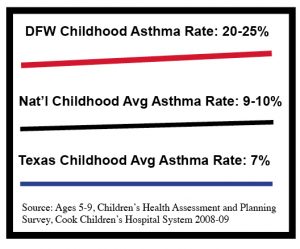 No EPA or state order will be overseeing the implementation of new controls on major sources affecting DFW air quality like the Midlothian cement kilns, East Texas coal plants or gas patch facilities, or action of any kind. Citizens will probably have to sue to get the EPA to even reject the state plan now – something it was already on the public record saying it was ready to do prior to November 20th. That rejection will, however, only trigger a rewrite by Austin. 14 million DFW lungs are now trapped by a vicious cycle of inaction that both the state and federal government are fueling.
No EPA or state order will be overseeing the implementation of new controls on major sources affecting DFW air quality like the Midlothian cement kilns, East Texas coal plants or gas patch facilities, or action of any kind. Citizens will probably have to sue to get the EPA to even reject the state plan now – something it was already on the public record saying it was ready to do prior to November 20th. That rejection will, however, only trigger a rewrite by Austin. 14 million DFW lungs are now trapped by a vicious cycle of inaction that both the state and federal government are fueling.
Other attempts by the Administration to attack the efficacy of the Agency are more structural. Seemingly with no more than spite as a motivation, there was a report circulating last month the Chicago regional EPA office would be shut down and consolidated with its Kansas City peer, with a corresponding cut in staff and resources. That’s not likely to happen for a variety of reasons, but it shows the kind of opportunistic thinking driving Agency opponents to start a fire sale. This Administration will probably not withdraw from the Paris Climate Accords, but it can be successful in blunting any EPA attempt at actual environmental protection.
That’s why it’s important not to let the opportunists at the Trump EPA win the day. We need to make sure they get a loud and clear message not to mess with the Clean air Act or anything else. Don’t hesitate. Communicate your outrage now, where it will be counted by both sides. Thanks.
Chris Turner Becomes First State Representative to Ask EPA for new DFW Air Plan
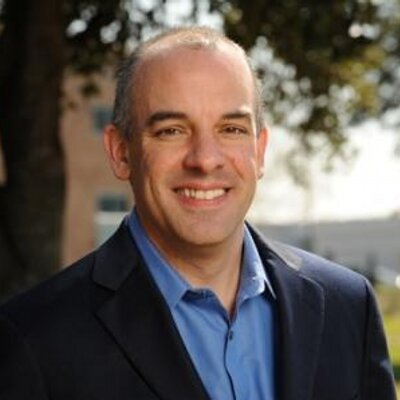 State Representative Chris Turner, whose District 101 spans west Grand Prairie and east Arlington between Dallas and Fort Worth became the first state elected official to urge EPA to reject the current state anti-smog plan for DFW and substitute one of its own.
State Representative Chris Turner, whose District 101 spans west Grand Prairie and east Arlington between Dallas and Fort Worth became the first state elected official to urge EPA to reject the current state anti-smog plan for DFW and substitute one of its own.
In a letter to EPA Chief Gina McCarthy, Turner used language echoing the sentiments of US Congresswoman Eddie Bernice Johnson and Congressman Marc Veasey.
"While I hope that the TCEQ will take the public comments it received by EPA, the Texas Medical Association, and others into consideration and require additional emissions controls in the final SIP revision it submits to EPA, I ask you to consider rejecting the state's plan use of a Federal Implementation Plan if your agency decides that the final SIP revision is insufficient and the state will not negotiate in good faith."
The entire letter can be read here.
Besides Johnson and Veasey's letters, Dallas County and the City of Dallas have voted in favor of resolutions condemning the currently proposed plan has being inadequate. More cities and counties are expected to pass similar resolutions as elected bodies come back from summer breaks.
Members of the DFW Clean Air Network (DFW CAN) – Downwinders at Risk, the Sierra Club, Beyond Coal, the Texas Campaign for the Environment, Mansfield Gas Well Awareness and Livable Arlington – are also out and about obtaining letters like Turner's from other state and federal elected officials.
Turner's district is directly downwind of the Midlothian cement plants and includes numerous natural gas wells and facilities. Gas sources are now the fourth largest contributor to DFW smog.
According to EPA, the state plan arrived at the EPA's doorstep August 8th, but it's already DOA.
Although ozone season is far from over and it's been a relatively mild "season" so far, we know in its second full year out of the three years allotted for success, the state air plan will, at best, have brought down ozone levels by 1 ppb from 2015 levels, to 80 ppb. We're supposed to be at 75.
The parrot is dead. We're just waiting for the state to admit it – or the EPA to shut the farce down.
Meanwhile, the more political support on the ground in DFW for an EPA alternative that might actually reduce emissions from major sources in North Texas like gas, cement kilns, and coal plants, the more likely it is for the Agency to accept the challenge, and endure all the pushback from Austin it'll get if it decides to take over the job.
If you're interested in trying to get your city, county, or state or federal elected officials to join the band wagon and reject the state plan, write or call us and we'll work with you in getting something accomplished that can add to the momentum.
Holy Gas Mask! Dallas City Council Finds Rare Unanimity, Votes 15-0 for Cleaner Air. Thank You
 Was it something in the air? Or maybe your emails in their mailboxes?
Was it something in the air? Or maybe your emails in their mailboxes?
Sandy Greyson, supported by a citizens army, pulled off the unthinkable and delivered a rousing 15-0 endorsement from the Dallas City Council for her resolution calling for a better smog clean-up plan for DFW than the one the state is currently pursuing.
Despite last-minute objections from coal plant operator Luminant and the Oil and Gas industry lobbying groups, Greyson wrangled the entire city council into agreeing the region can do better than a hands-off approach to major industrial polluters. Dallas County voted in support of a similar resolution in May.
It wasn't quite lions laying down with lambs, but it was close. She secured the votes of stalwart green council members Scott Griggs, Philip Kingston, and Adam Medrono, as well as council conservatives Jenifer Staubach-Gates, Lee Kleinman, Rickey Callahan, and Adam McGough. Southern Dallas members found common ground with their North Dallas peers. Trinity toll road opponents and supporters who don't even speak to each other all spoke in praise of Greyson and the resolution.
It wasn't just the final tally, as impressive an accomplishment as that is, that was shocking. It was all the different succinct points of view used to justify the resolution's passage. Philip Kingston berated the Texas Commission on Environmental Quality (TCEQ) for having morphed into an Orwellian institution, where "Freedom is Slavery, and Smog is Clean AIr." Lee Kleinman cited conservative economic principles to conclude "when a business takes clean air and makes it dirty, it should pay." Carolyn Arnold spoke to her disillusionment with the state over the Columbia meat-packing facility. Jenifer Staubach-Gates' decision was informed by her background as a school nurse.
As the last speaker before the historic vote, Mayor Mike Rawlings gave as good a summary of the tough position the current state strategy is putting local governments as you will hear. Dallas is stuck in the middle of "a game of chicken" between an inadequate plan from Austin and the requirements of the Clean Air Act. And the intent of the resolution is to put an end to that game and get serious about developing a practical cost-effective way to get clean air. It was the discussion's drop-the-mic moment.
There was also a marked diversity among citizens showing-up at City Hall to speak in favor of the resolution. Latino, black and white citizens joined ranks. Usual suspects Sierra Club, Texas Campaign for the Environment, and Downwinders at Risk, were joined by Mansfield Gas Well Awareness, as well new neighborhood group, West Dallas 1. Despite pre-vote visits and letters, no opponents of the resolution signed-up to speak.
If you ever doubted your emails to city council have an impact, this vote is proof-positive they do. Mayor Rawlings described the campaign leading up to the resolution's passage as a "textbook example" of how citizens and policymakers can craft progress on important issues, specifically calling out the hundreds of emails he and the rest of the council received, and the methodical process supporters pursued.
Thank you to everyone who took the time to send an email or make or call. You helped make this good thing happen. Everyone gets an "A" in Citizenship this month.
A win in the non-attainment area's largest city would have given the proponents of a new air plan confidence going into other North Texas communities in search of similar resolutions. A 15-0 vote from Dallas turbocharges that effort. This is a strong signal that local governments need to act, regardless of ideology, to protect their own self interests. It will be heard throughout the region by other Mayors and elected officials.
Where do we go next? Good question. Local officials are talking amongst themselves to decide where similar resolutions should be introduced next, but let us know if you're interested in helping us pass one in your city or county.
And, look, if you think this was a worthwhile thing, that we made some kind of progress today, then won't you please consider dropping $25 or more in the tip jar?
We win these victories with scant resources, that are, frankly, scantier these days. We want to keep rolling. Help us keep the wheels greased. DONATE HERE.
Thanks. Onward thru the smog.
Dallas City Hall Tomorrow: King Coal Capitulation or Clean Air Appreciation?
Rally in Support of Clean Air
Tomorrow- Wednesday, June 15
9:30 AM City Hall flag Room
5th floor at Dallas City Hall, 1500 Marilla
Speakers Include:
Lon Burnam, Former Texas State Representative
Ronnie Mestas, President of West Dallas One
Sonja Cooper and Adenike Higgins, asthma patients
Cherelle Blazer, Sierra Club Beyond Coal
If DFW is to have any chance of meeting federal smog standards before the end of this decade, it must have a better plan to clean the air than the one being currently proposed by the State of Texas.
To get that better plan, local governments must tell the state and EPA to go back to the drawing board and cut pollution from all major industrial sources, including the Midlothian cement kilns, huge natural gas compressors, and the East Texas coal plants. According to the state's own data and modeling, cutting pollution from these major source is a cost-effective strategy which can significantly lower smog levels in DFW.
On Wednesday the Dallas city council is voting on a resolution that tells the State of Texas and EPA we must do better than another 25 years of failure. It urges the state and federal government to get serious about cutting pollution from major sources. Reportedly, Luminant, (the old TXU), assisted by the Dallas Chamber of Commerce, is attempting to persuade the City Council to reject the clean air resolution based on its call for modern controls on the aging East Texas coal plants Luminant operates.
As of today, we don't have a reliable vote count. We must not take support for granted. Please join us tomorrow morning at City Hall to rally for clean air to breathe 365 days a year.
Sign up to speak to the council in favor of the clean air resolution by calling the City Secretary's office (214-670-3738) and telling them you want to speak for "Item 12" on the consent agenda. If you don't sign up before tomnorrow, you won't get to speak. Talking points are in this post.
This may be the most important clean air vote the City Council makes all year. It can create momentum for other cities to pass similar resolutions. It can send Austin and Washington a powerful message. But we need your help to make it happen.
We Have A Fight On Our Hands: Luminant Said To Be Trying to Scuttle Dallas Clean Air Resolution With Dallas Chamber Help
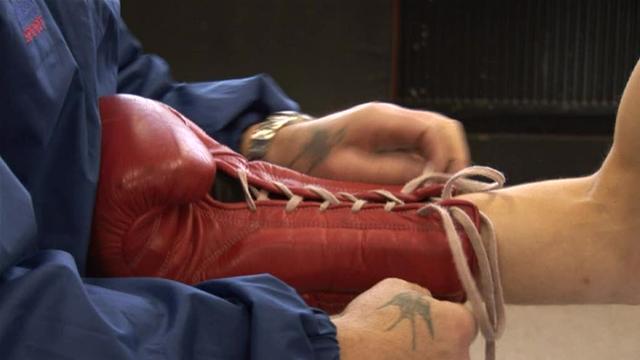 Only 48 hours after the single worst day for DFW smog since 2013, coal plant operator Luminant reportedly began a lobbying campaign to scuttle Sandy Greyson's Dallas city council clean air resolution requesting a better anti-smog plan.
Only 48 hours after the single worst day for DFW smog since 2013, coal plant operator Luminant reportedly began a lobbying campaign to scuttle Sandy Greyson's Dallas city council clean air resolution requesting a better anti-smog plan.
As a result, Item #12 “A resolution authorizing the City of Dallas to communicate its positions and requests regarding the Texas Commission on Environmental Quality's (TCEQ's) proposed State Implementation Plan for the Dallas-Fort Worth Region ozone pollution to the State of Texas, the TCEQ, and other agencies” is expected to be pulled from Wednesday’s unanimous voice-vote “consent agenda” and placed in line with other items generating discussion and dissent. It may be a long day – and that's exactly what the resolution opponents want in order to wear us down.
Luminant was said to be contacting city council members over the weekend, reportedly with the assistance of representatives of the Dallas Chamber of Commerce. In the past the company has stated it objects to the costs of installing the kind of modern anti-smog controls, referenced by the city’s resolution, at its three aging East Texas coal plants, despite their large smog-causing emissions. We don't know how successful the company's lobbying has been, or how much trouble the resolution is in.
If you're mad about this news, good. Here's what we need you to do:
1. If you haven't already, please follow this link and send a "click and send" ready-to-go email to all 15 Dallas city council members urging them to vote for the clean air resolution. You can add your own language at the bottom if you want.
2. Please sign up to speak in favor of clean air and the resolution on Wednesday
You must call the City Secretary''s office at 214-670-3738 to reserve a 3 minute speaking slot. Make sure you sign up for Item #12 on the consent agenda. If you don't sign-up in advance, you won't get to speak up on Wednesday!
We need to be there beginning at 9am, but we don't know how soon the resolution will come up in the agenda now. We know this makes it inconvenient. Again – not by accident. We've outlasted them before. We need to do it again.
3. Emphasize these Talking Points in your emails and speaking on Wednesday
-
All the air pollution control measures referenced in the city's clean air resolution are currently available, off-the-shelf technology, already in use in the world, US, and even Texas. Nothing exotic. Nothing experimental. There are coal plants and cement kilns with catalytic converters. There are already electric compressors. The resolution says only that the state should consider applying these technologies uniformly – to ALL major industrial sources affecting DFW air quality.
-
All the air pollution measures referenced in the city's clean air resolution are among the most cost-effective that can be taken, costing a small fraction of other measures already adopted. Putting controls on the coal plans and kilns costs $2-3,000 per ton of smog-forming pollution removed vs state programs spending $10-13,000 per ton. It's cheaper to prevent pollution at a dozen or so smokestacks than millions of tailipipes.
-
Most smaller Dallas businesses are already heavily-regulated for emissions because they're located within the DFW "non-attainment area," for smog, while the East Texas coal plants creating a huge chunk of that smog continue to be exempt from the same kind of regulations because they're located 90-100 miles outside the non-attainment area. They have more impact, but less regulation. That's not fair to Dallas-based businesses, or DFW''s seven million residents. We need small business owners to say the Chamber and Luminant doesn't speak for all of the Dallas business community.
-
The costs of installing new controls are small compared to the economic and public health costs of not installing them. Dr. Robert Haley's recent study for the Dallas County Medical Society concluded a drop of just 5 ppb in North Texas smog levels could save $650,000,000 in lost economic growth, and prevent hundreds of ER admissions, and 100 premature deaths – EVERY YEAR.
-
Luminant is taking the position that their three old coal plants are more important than the health of 1.2 million Dallas residents, and the other 5.5 million DFW citizens who breathe dirty air. The company is asking the Dallas City Council to place its interests above everyone else's.
-
DFW has been in continual violation of the Clean Air Act for smog since 1991. Our childhood asthma rates are higher than the state OR national average. EPA has already said the current plan doesn't do enough to lower smog levels to meet the federal standard. But opponents of the resolution have no alternative. They want the City of Dallas to sit on its hands and do nothing about 25 years of chronic smog – no matter how many people are affected by bad air. Does the City of Dallas really want to send the message that it doesn't care about clean air only a week before it hosts its own "Clean AIr Action Day" event at City Hall Plaza next Friday?
Some critics of these resolutions have argued they're only symbolic requests for cleaner air, and don't mean that much, or carry that much weight. If Luminant's reported response is any indication, it thinks this resolution is a threat to plans to sell-off those aging coal plants as part of its parent company's bankruptcy. We must be doing something right to engender this kind of alleged opposition from North Texas' King of Coal.
DON'T LET BIG COAL WIN THIS FIGHT
SPEAK UP IN SUPPORT OF CLEAN AIR – Call the City Secretary and Register to speak on Wednesday
THIS WEDNESDAY, JUNE 15th
9 AM DALLAS CITY HALL 1500 MARILLA
Bring the East Texas Coal Plants into DFW’s Smog “Non-Attainment Area” and See How Long They Last……
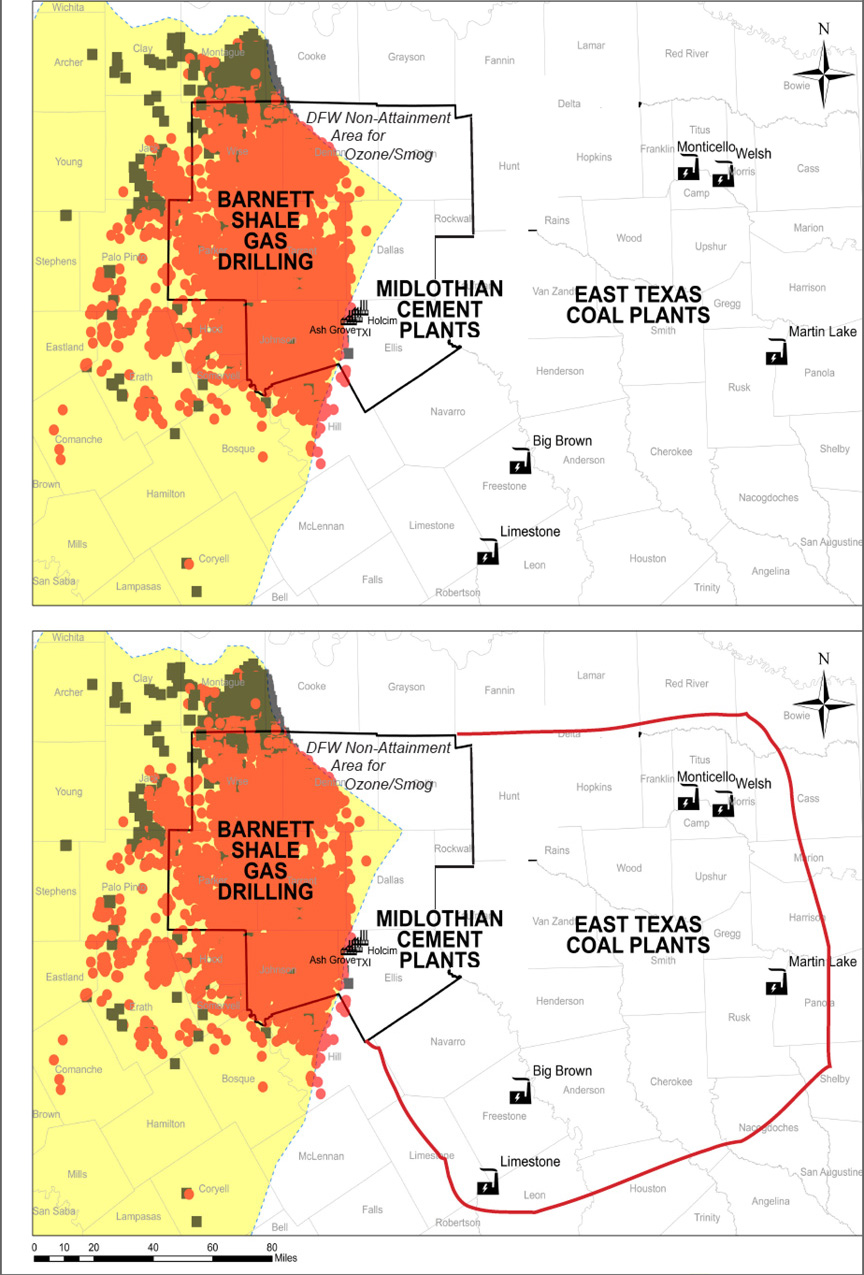 Want the Coal Plants to Face the Kind of Regulation
Want the Coal Plants to Face the Kind of Regulation
They've Been Avoiding for Decades?
Click here and send a formal comment letter demanding the coal plants
be included in the new DFW non-attainment area for smog.
Even as we're all waiting to see what EPA decides to do about the current Texas air plan for DFW under the current 75 ppb ozone standard, the regulatory process is gearing-up to administer the new 70 ppb standard.
One of the things which must be decided by the EPA are what geographical boundaries to use for the new standard when it comes to the DFW airshed and its chronic smog condition. Should they stick with the current 10-County configuration or should it be different and/or more inclusive?
The history of DFW's smog fight is a lengthy chronicle of bringing new counties into the fold despite official resistance. Originally, the DFW non-attainment area was only Tarrant, Dallas, Collin and Denton. Then Rockwall, Parker, and Johnson Counties came in because of their commuter traffic.
Downwinders had to petition the EPA to bring Ellis County and its cement industrial complex into the non-attainment area early in this century after being told repeatedly by state officials that its pollution had no impact on DFW air quality.
More recently, the state argued against the inclusion of Wise County, despite its huge inventory of oil and gas pollution, population of commuters, and more than likely, the highest ozone levels of anywhere in North Texas. EPA decided to bring it in anyway.
We're once again at a crossroads, and it could be the most significant one in a decade.
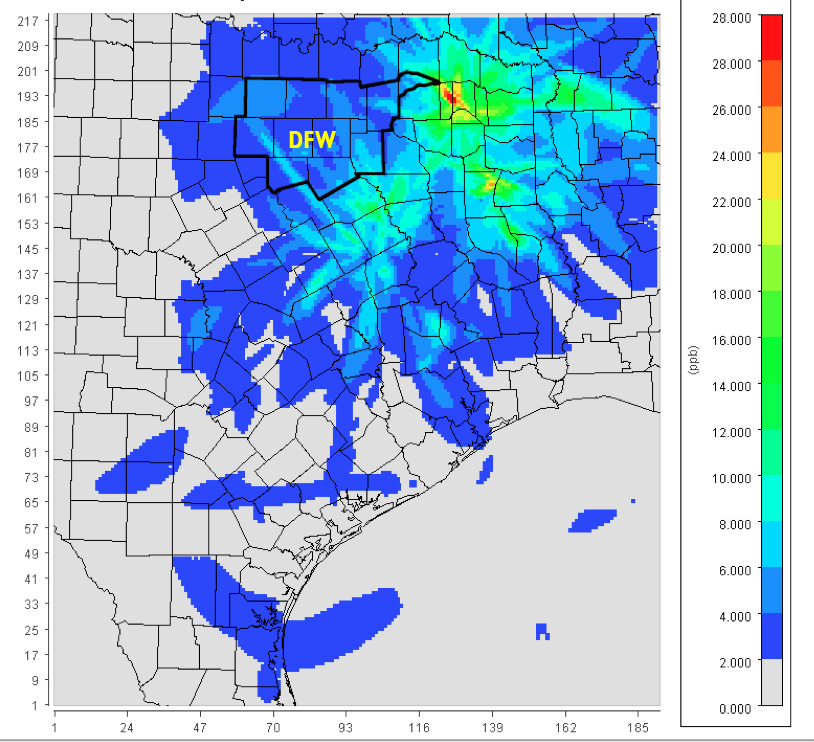 New evidence shows the huge impact the East Texas coal plants have on DFW air quality. Every scenario run by the UNT Engineering Department with the state's own DFW air computer model as part of Downwinder's Ozone Attainment Project demonstrates there's no more effective smog fighting strategy than reducing or eliminating the pollution from these coal plants.
New evidence shows the huge impact the East Texas coal plants have on DFW air quality. Every scenario run by the UNT Engineering Department with the state's own DFW air computer model as part of Downwinder's Ozone Attainment Project demonstrates there's no more effective smog fighting strategy than reducing or eliminating the pollution from these coal plants.
In fact, with a few other measures within the DFW area itself, controlling or eliminating their emissions could bring us in compliance with the 75 ppb standard, something that's not likely to happen otherwise.
Why is it so important to officially bring them into the DFW non-attainment area? Because major sources of pollution like coal plants are regulated differently inside than they are outside the area.
Right now, many DFW businesses are having to pay to operate and maintain pollution control equipment although most emit a tiny fraction of the pollution coming from the coal plants. That's because they're located in one of the ten counties in the DFW non-attainment area. They're held to a higher standard of control than their peers doing business outside those ten counties.
On the other hand, despite their large contribution to DFW's chronic ozone problem, the East Texas coal plants remain untouched by the same regulations and are not held to that higher standard. What sense does that make?
As much sense as it made to keep the cement plants out. As much sense as it made to try and exclude Wise County.
As per usual, the EPA is letting the state have first crack at defining a new DFW smog zone. The state has decided to leave the boundaries the way they are.
 Now, it's your turn to comment on that state decision, and tell Austin and the EPA – which will review the State's recommendations – what you think needs to happen.
Now, it's your turn to comment on that state decision, and tell Austin and the EPA – which will review the State's recommendations – what you think needs to happen.
The state is accepting comments on its decision until April 15th. This time, you can send your comments directly by e-mail instead of having to go through the official Texas Commission on Environmental Quality website
If you want to use our ready-to-send letter, all you have to do is CLICK HERE , sign the letter and add your own comments if you want. Then one more click and it's on it's way to Austin.
If you want to write your own comments:
EMAIL: kristin.patton@tceq.texas.gov
SNAIL MAIL: Kristin Patton, MC 206, State Implementation Plan Team, Office of Air, Texas Commission on Environmental Quality, P.O. Box 13087, Austin, Texas 78711-3087,
FAXED:(512) 239-6188.
All comments should reference "2015 Ozone NAAQS Designation Recommendations."


